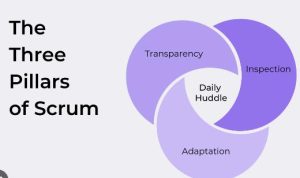What's the Difference Between a Huddle and a Meeting?
Defining the Terms Understanding the dynamics of workplace gatherings is key to optimizing productivity and communication. While "meeting" is a familiar term, "huddle" is gaining traction in business vocabularies, especially among teams looking for quicker, more engaging ways to disseminate information and align strategies.

Purpose and Duration Huddles are short, informal gatherings typically lasting about 10 to 15 minutes. They are designed to align team members on daily goals, share important updates, and foster a sense of urgency and focus. Huddles encourage quick decision-making and are often stand-up events to maintain the pace and energy of the discussion.
Meetings, on the other hand, are more structured and can last from 30 minutes to several hours. They serve a variety of purposes, including in-depth project discussions, strategic planning, and problem-solving sessions. Meetings usually involve a set agenda and are scheduled well in advance to accommodate the participants' calendars.
Frequency and Planning Huddles occur more frequently, often daily or several times a week, due to their brevity and focus on immediate tasks. They require minimal planning; sometimes, a quick call or a brief notification suffices. Huddles are about keeping the momentum going and ensuring everyone is on the same page.
Meetings require more preparation and are less frequent. Preparing for a meeting can involve creating detailed agendas, gathering necessary documents, and ensuring all stakeholders can attend. This formality is part of ensuring that the time spent in meetings is productive and that all necessary topics are covered thoroughly.
Participation and Interaction In huddles, interaction is highly encouraged. Everyone stands in a circle, facilitating an open environment where each participant has the chance to speak. This setup is ideal for energizing the team and quickly addressing any immediate concerns that affect daily operations.
In contrast, meetings often have a more defined hierarchy of speakers and may include presentations or formal discussions. While there is still room for interaction, it tends to be more controlled and sometimes limited to Q&A sessions at the end of the presentation.
Huddle vs Meeting Choosing between a huddle and a meeting depends largely on the objective of the gathering. Huddles are best when the goal is to ensure team alignment on immediate or daily tasks. Meetings are more suited for detailed discussions, decision-making that requires in-depth analysis, or when issues need thorough exploration.
Optimizing Team Communications Both huddles and meetings are essential in a corporate setting, but knowing when to use each can significantly enhance team efficiency. Huddles are perfect for agile teams that need to stay connected and react quickly to changes. Meetings are indispensable for tackling complex issues that require thoughtful consideration and input from various departments.
By understanding the differences between a huddle and a meeting, leaders can better plan their communication strategies, ensuring that every second spent in these gatherings drives the team closer to their objectives.